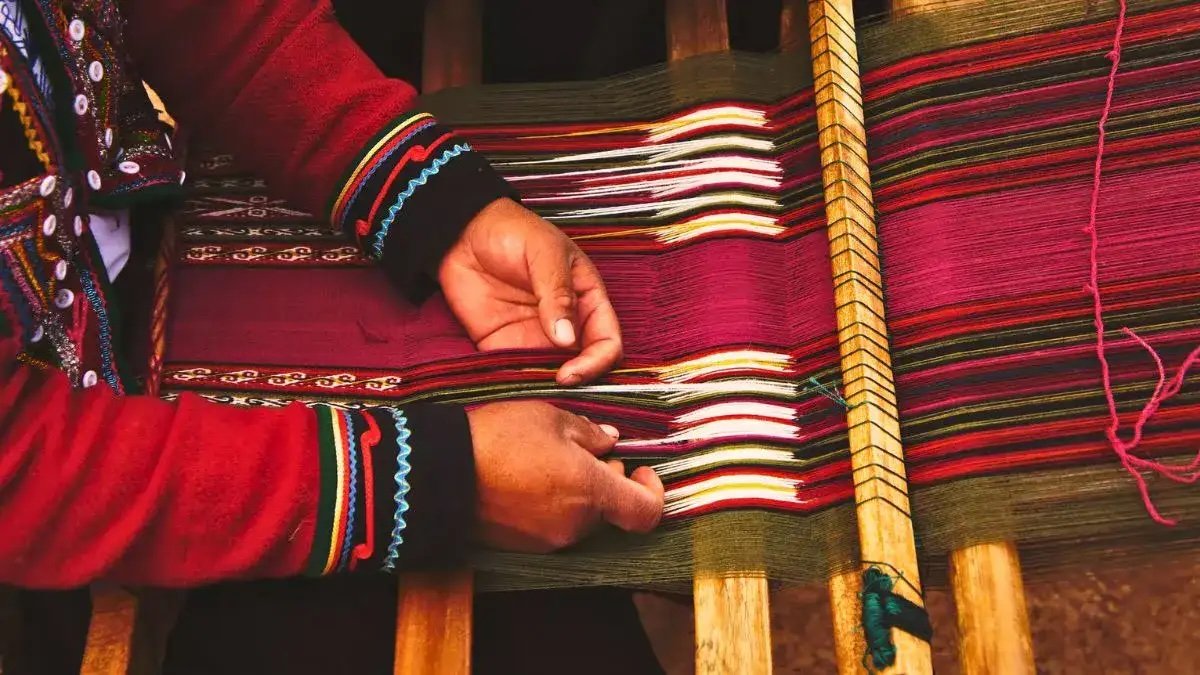Discovering Sikkim’s Handloom Heritage with this artisan trail
Walking Through Threads of Tradition and the Soul of Sikkim’s Craft Heritage
In the rolling hills of South Sikkim, where the air carries the earthy scent of tea and the slow rhythm of life feels like poetry, there exists a trail that reveals the quiet genius of the human hand — the Artisan Trail of South Sikkim. This is not just a walk through villages and workshops; it’s an immersion into centuries of craftsmanship, where culture, ecology, and identity are woven together — quite literally.
The Heartbeat of Namchi’s Looms
Your journey begins in Namchi, the cultural and administrative heart of South Sikkim. The Namchi Handloom and Handicrafts Centre, tucked away from the town’s main roads, hums with the gentle rhythm of looms. Here, artisans — primarily women — sit cross-legged on low stools, weaving woollen carpets, traditional Sikkimese fabrics, and handmade Thangka scrolls that depict Buddhist deities and stories from the Himalayas.
The origin of this handloom tradition traces back to the Lepcha and Bhutia communities, who used locally sourced sheep wool and vegetable dyes to create textiles that were as functional as they were spiritual. Each motif has meaning: diamond patterns symbolise protection, stripes mark lineage, and the bold reds and yellows echo the hues of monastic robes.
When you speak to the artisans, they tell you stories — of mothers teaching daughters to weave before dawn, of festivals where woven shawls are exchanged as blessings, and of how every design carries a piece of the weaver’s soul.
Temi Village — Where Tea Meets Textile
From Namchi, a scenic drive takes you to Temi Village, famous for the Temi Tea Estate, Sikkim’s only tea garden and one of India’s most sustainable plantations. But beyond the emerald slopes lies a quieter heritage — a thriving craft culture sustained by the Lepcha tribe.
Here, you’ll witness the delicate art of bamboo weaving — baskets, mats, and even lampshades made entirely by hand. The air smells faintly of natural dyes — turmeric for yellow, indigo for blue, and walnut bark for brown — as local artisans demonstrate organic dyeing techniques that are generations old.
Visitors can even participate in a short workshop to learn how to dye and weave small pieces to take home. The experience feels meditative — every knot and thread a lesson in patience and reverence.
A Taste of Tradition: Food of the Hills
No heritage walk in Sikkim is complete without food — the truest expression of a place. The trail ends at a family-run home café overlooking the lush tea estates. You’ll sit cross-legged on bamboo mats as your hosts serve a simple yet hearty meal:
Buckwheat roti paired with chhurpi curry (a tangy local cheese preparation)
A bowl of kinema curry, made from fermented soybeans
And finally, a warm tumbler of tongba, traditional millet beer that locals sip slowly through bamboo straws.
Each dish is a reminder that Sikkim’s culinary traditions, like its crafts, are deeply tied to its geography and climate — resourceful, sustainable, and full of heart.
When and How to Go
The best time to walk the Artisan Trail is between November and February, when the air is crisp and the hills shimmer in golden light. Namchi is well connected by road from Gangtok (78 km) or Bagdogra Airport (100 km).
You can explore the trail through local heritage tours or by contacting Sikkim’s handicraft department, which occasionally organises guided experiences that directly support local artisans.
Why You Should Take This Walk
In a world where mass production dominates, the Artisan Trail offers a rare encounter with authenticity. Here, you don’t just see crafts — you meet their makers, understand their rhythm, and perhaps, rediscover your own.
Every thread, every dye, and every carved bamboo piece has a story of resilience and creativity. It’s a walk through Sikkim’s living museum — a reminder that culture survives not in monuments, but in the hands that keep it alive.



